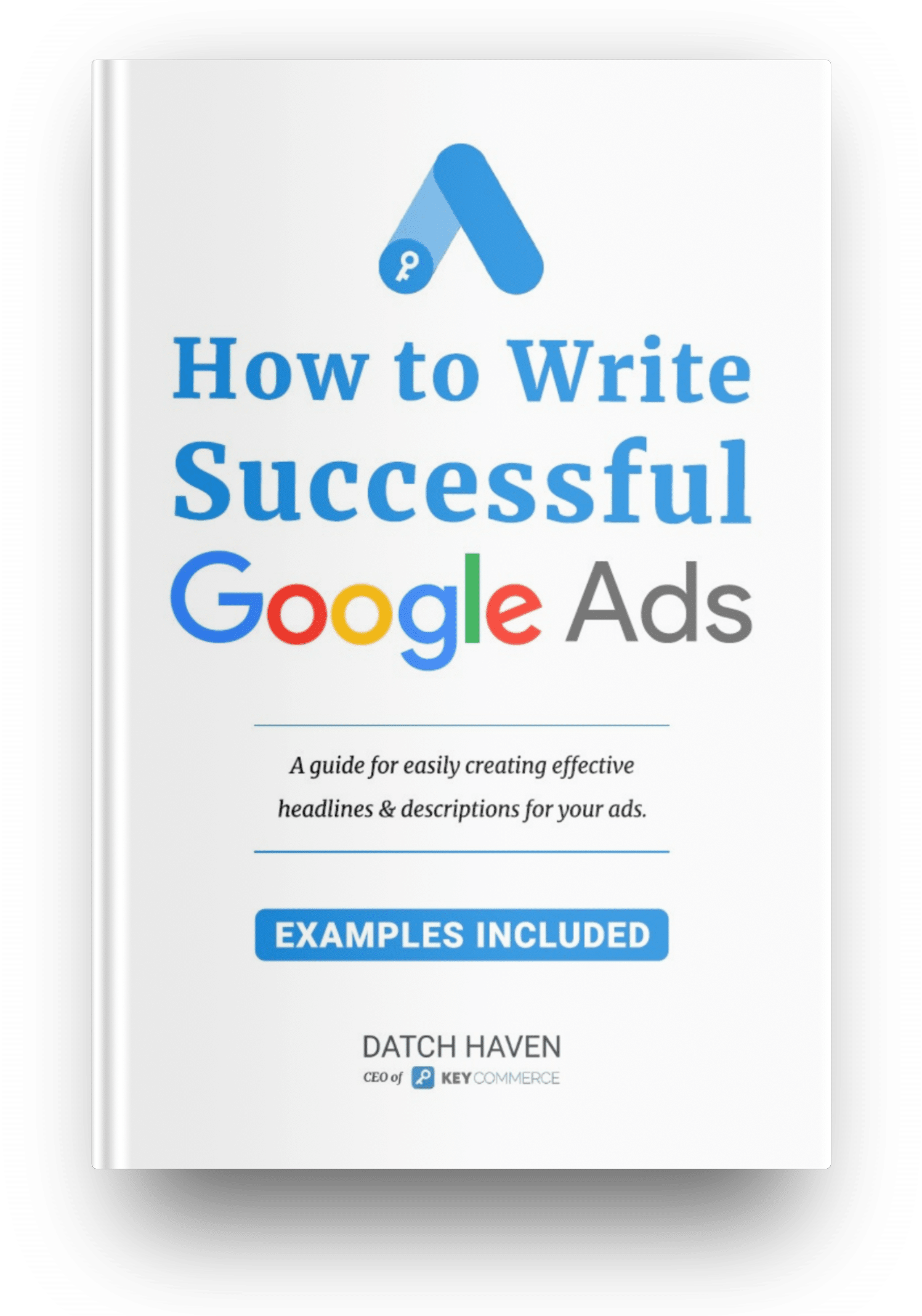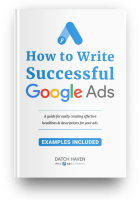What are Google Shopping ads?
Google Shopping ads are graphic advertising that appears at the top of the search results when you search for a particular product. The ad contains product details such as color, size, price, seller, and a picture of the item.
Why are Google Shopping Ads good for ecommerce?
It's one thing to build an online shop, but another to get people to visit your website. Google Shopping Ad campaigns let ecommerce businesses target their customers and drive them to the store using image-driven advertising.
It's a way to advertise and market your brand and products through one dashboard across various channels. If set up correctly, the return on investment is worth the time and money spent on the ads campaign.
The problem is that many online store owners don't know enough about Google ads to run an effective campaign, leading to wasted money and time. We delve into the various reasons why ad campaigns fail and what you can do to fix the issues.

Reasons why Google Shopping ads fail
There are several reasons why Shopping ads fail, and it's worth taking the time to read through each one listed below to see if there's anything you need to fix or adjust.
Incomplete conversion tracking
According to the Disruptive Advertising report, 57.7% of ad campaigns don't have conversion tracking. Nearly half have some conversion tracking setup, but it's ineffective or incorrectly set up, which means businesses have no way of knowing how many conversions they're getting.
Poor conversion rates
Furthermore, other reports show that the average conversion rate is 2.35%. This result can be due to several reasons, the most common being a mismanaged product feed, ineffective product descriptions, landing page speed or irrelevant content, and incomplete conversion tracking.
On the other hand, accounts with proper conversion tracking setup can increase their conversion rates substantially. The top 10% of websites see conversion rates as high as 11%, and sites within the top 25% have around 5.31%.
Another factor contributing to low conversion rates is the lack of account management. Often, inexperienced marketers ignore search term reviews, which could lead to irrelevant traffic, and decreasing conversion rates.
Ad spend inefficiency
Another reason businesses fail at Google Shopping Ads is that they're spending money on search terms that aren't converting. But, again, the problem is linked to incomplete or inefficient conversion tracking.
If you know which keywords are contributing to your sales and which aren't, it's easier to weed out the ones that aren't performing. However, you will only know statistics if your conversion tracking is set up correctly.
To improve ad spend efficiency, use product segmentation and bid adjustments to increase the budget for priority products with higher converting potential.
Wasted ad spend
The numbers also show that 76% of all ad spending is wasted. That's shocking, to say the least, and once again, conversion tracking is at the heart of it all.
You need to know which ads, ad groups, and keywords are working and which are duds, or you'll just be wasting your advertising budget. Just throwing money at shopping ads without a clear plan or monitoring system isn't going to improve sales.
Ineffective website
It's not enough to drive people to your website. Your site's landing page needs relevant content to convert visitors into sales. The same goes for your product pages. Bad quality images and descriptions aren't likely to convert as well as concise information with clear photos of your products.
Conversion Rate Optimization is achievable with intuitive user experience (UX) in mind when designing an ecommerce store. Read our article on Conversion Rate Optimization (CRO) to find out how it works.
Incorrect use of geo-targeting
A simple but common mistake is targeting your ads toward an audience you can't serve. For example, if you have a plumbing business in the US, don't target audiences in Australia. Instead, ensure that your ads focus on the locations where you can provide a service to clients.

Failure to optimize Google shopping feeds
Many ecommerce retailers link their websites directly to their Google Merchant Center accounts and implement the automatic product feed. Even though in the short term it's time-saving, in the long run, it can cost you.
The reason is that there is no opportunity to optimize the feed in line with search activity.
Feed optimization aims to provide accurate, sufficient, and intriguing information to potential customers.
It is essential mainly because of the following:
First, Google can crawl wrong information. For example, it is often seen that Google crawls false values for the attribute of [brand], which is supposed to be an easy task. However, these erroneous values can be corrected by overwriting them with the supplemental feed.
Second, submitting accurate values in attributes like [size], [color], [material], [pattern], or other important features of the specific product helps the products to stand out when the potential customer is using the filter to select in shopping.
Third, by adding attributes(eg. [product_highlight] & [product_detail]), we're able to provide sufficient information to encourage interaction before people clicking on the ads. These attributes are often ignored in regular Google Ads management.
In addition, reactive title optimization can significantly improve performance in some cases. Based on the data observation, we can identify the most value-added words to the potential customers. Then, reactively insert value-added words or move value-added terms to the front position of the title.
Consider the following example as an explanation of the above.
The words “Fine Leather XXXXX” were used as a feed title. However, after an N-Gram Analysis, we found that “genuine leather” is more intriguing to the searchers than “fine leather.” In the title A/B testing, the new titles starting with” Genuine Leather” got an extremely high conversion rate.
Limiting product range
Many ecommerce marketers unwittingly limit their ads potential. For example, if a product comes in five colors, you should have five ads, one for each color. Many advertisers only run one ad for the product, which means they are potentially reducing the click rate if the product shown doesn't match what the user is seeking.
It would be pertinent to segment your ads into various IDs to see which are performing well and which aren't. This method makes it easier to identify and discontinue failing products.
Lack of detail and clarity leads to inaccurate bids
Often store owners need the correct tools to make informed decisions about their marketing campaigns. For example, accurate information shows which search terms are performing well and whether they should bid up or down or stop a specific ad.
When the information is missing, it leads to frustration and confusion, often resulting in ecommerce stores pulling the plug on Google ads altogether. If you find yourself in this position, it may be a good idea to hire an agency to help you get granular with your stats and help you move in the right direction for optimization.
Google Shopping ads are becoming expensive
More and more ecommerce stores are entering the marketplace, which means more businesses like yours are bidding for the same piece of virtual advertising real estate. The rise in campaign prices is another important reason for staying on top of your metrics and knowing what's happening in your Google ads account.
Technical problems
Sometimes the problem lies not in metrics and bids but in technical issues that a Google Merchant Center or Google Ads account has.
These could include situations such as:
- Products “Not ready to serve” – This could mean the products are disapproved, not active, or out of stock.
- Incorrect data in product feed – Ensure that the information in your feed is accurate to prevent any disapprovals or delays in serving the ad.
- Products not meeting the Google Shopping Policy requirements – Check that your products aren't on the prohibited list. Also, ensure that you have all the required policies on your website.
- Disorganized Google Ads account or campaign structure – Map out your product categories, and organize them properly using labels and informative descriptions.
Final thoughts
Despite these problems, Google Shopping ads remain an effective marketing tool. Doing the correct setup from the start makes a difference between a well-run campaign that leads to sales and a money-wasting black hole.
If you need help optimizing your Google Ads accounts, book a call with us to see how we can help your business reach its goals.












